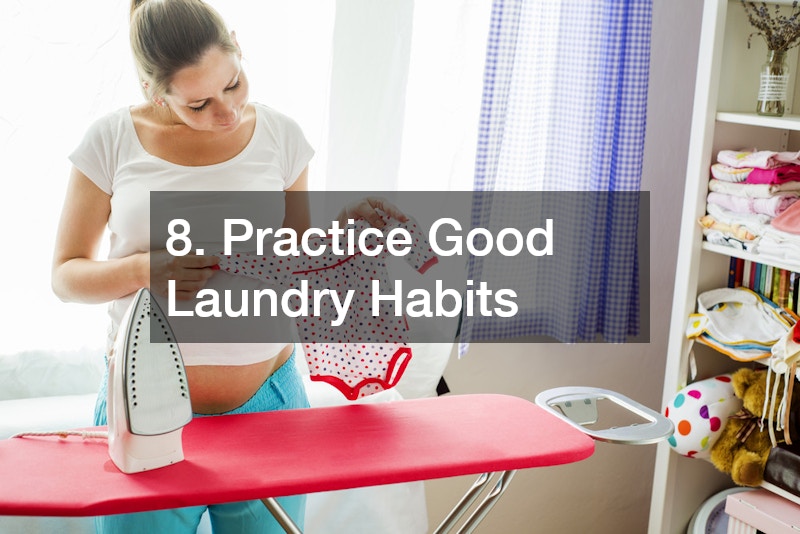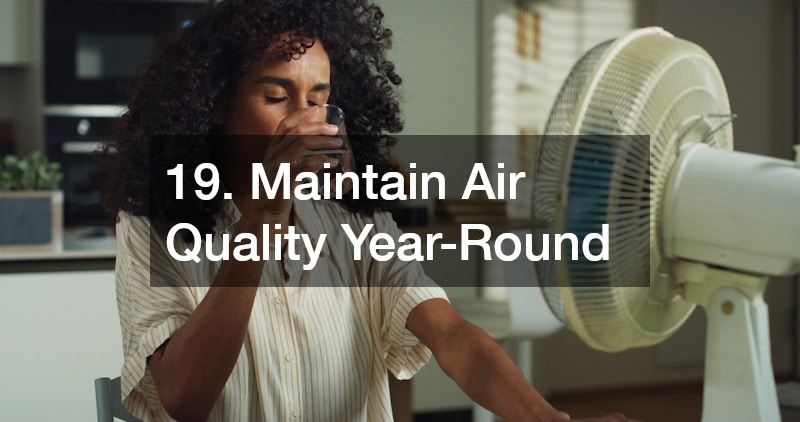Keeping your space clean isn’t just about making it look good—it’s about protecting your health and the well-being of those around you. From germs to allergens to harmful bacteria, many threats can go unseen without a strong, consistent cleaning routine. These 19 cleaning tips offer a practical guide to keeping your home or workplace as safe and sanitary as possible. Whether you’re concerned about high-touch surfaces, soft furnishings, or shared spaces, there’s a strategy here that fits your needs.
These 19 cleaning tips go beyond basic dusting. They address often-missed areas and help you form smart habits that work long-term. Whether you’re wiping down electronics, using safer products, or maintaining ventilation, the goal is to create a healthy, comfortable environment from top to bottom.
- 1. Disinfect High-Touch Surfaces Daily
- 2. Use EPA-Approved Cleaning Products
- 3. Clean Surfaces Before Disinfecting
- 4. Sanitize Shared Electronics Regularly
- 5. Wash Hands Before and After Cleaning
- 6. Sanitize Soft Surfaces Like Upholstery
- 7. Clean and Disinfect Shared Workspaces
- 8. Practice Good Laundry Habits
- 9. Ventilate Every Room While Cleaning
- 10. Store Cleaning Supplies Safely
- 11. Rotate and Disinfect Bedding Weekly
- 12. Vacuum With HEPA Filters Often
- 13. Clean Garbage and Recycling Bins
- 14. Wipe Down Personal Devices Daily
- 15. Use Gloves When Handling Harsh Cleaners
- 16. Shake Out and Sanitize Entry Rugs
- 17. Deep Clean Tools and Equipment Monthly
- 18. Disinfect Common Contact Points
- 19. Maintain Air Quality Year-Round
1. Disinfect High-Touch Surfaces Daily
Surfaces like doorknobs, faucet handles, light switches, and remotes can harbor large amounts of bacteria and viruses. Disinfecting these daily helps prevent the spread of illness, especially during flu season or when someone in your home is sick.
Using products like an anti bed bug bed cover also protects high-touch areas in your bedroom. Paired with surface disinfecting, it prevents pests and allergens from accumulating on your mattress.
2. Use EPA-Approved Cleaning Products
Always check that your disinfectant is EPA-approved. These products are tested and proven to eliminate pathogens effectively, including viruses and bacteria that can linger on surfaces.
Disinfect frequently touched entries like a 5 point security door. Use an EPA-certified spray to clean all handles and locks without damaging the finish or compromising security.
3. Clean Surfaces Before Disinfecting

Dirt, grease, and residue can reduce the effectiveness of disinfectants. Always clean surfaces first using soap and water, then disinfect afterward.
Appliances like your dump disposal collect grime quickly. Clean with a scrub brush and degreaser, then follow with disinfectant to handle bacteria and eliminate odors.
4. Sanitize Shared Electronics Regularly
Phones, tablets, keyboards, and remotes should be wiped down regularly. These are high-contact items that can carry germs between people and rooms.
Disinfect the keypad on your gun safe or biometric locks—these are often touched with dirty hands and can easily spread bacteria if ignored.
5. Wash Hands Before and After Cleaning
It’s easy to forget, but your hands can transfer germs to freshly cleaned surfaces. Wash your hands with soap for 20 seconds before and after any cleaning session.
This is especially critical when handling household items like propane tanks or grills—keep your hands clean to prevent contamination or safety risks.
6. Sanitize Soft Surfaces Like Upholstery
Couches, pillows, rugs, and curtains trap dust and allergens. Vacuum these regularly and use fabric-safe sanitizers or steam to clean them properly.
If your home uses an accordion hurricane shutter, keep curtains near these fixtures especially clean—they’re closed more often, increasing dust buildup on soft fabrics.
7. Clean and Disinfect Shared Workspaces
Whether it’s a kitchen counter, dining table, or shared desk, these spaces need frequent attention. Clean and disinfect daily when used by multiple people.
In fabrication shops or garages, polyurethane foam fabrication areas can collect particles. Clean work surfaces and tools thoroughly to reduce respiratory risks.
8. Practice Good Laundry Habits

Use hot water when appropriate, dry clothing fully, and clean your washing machine and laundry baskets often. This stops germs from lingering in fabrics.
For homes with chairlifts for stairs, disinfect seatbelts and rails, and regularly launder any removable covers to maintain a sanitary environment.
9. Ventilate Every Room While Cleaning
Proper ventilation helps clear out cleaning fumes and airborne particles. Open windows or run fans while using any chemicals to keep the air fresh.
This is especially true when you store items related to fire extinguisher sales. Cleaning these areas with poor airflow can be harmful—keep air moving.
10. Store Cleaning Supplies Safely
Keep products in a dry, cool place out of children’s reach. Proper storage keeps your tools effective and your home safe from leaks or spills.
If you have custom home theaters, organize screen-safe sprays and microfiber cloths nearby. Storing cleaners properly protects sensitive electronics and reduces dust buildup.
11. Rotate and Disinfect Bedding Weekly
Regularly wash all bedding in hot water and consider hypoallergenic or antimicrobial materials. This reduces allergens and keeps your sleeping space healthy.
Use covers like an anti bed bug bed cover as a barrier against pests and allergens that can accumulate unnoticed.
12. Vacuum With HEPA Filters Often
HEPA-filtered vacuums help trap microscopic allergens and dust mites that regular vacuums can miss. Aim to vacuum high-traffic areas multiple times per week.
This tip is especially useful in homes with carpeted rooms near a 5 point security door, which allows outdoor dust and pollen to enter easily.
13. Clean Garbage and Recycling Bins

Bins harbor bacteria and attract pests if not cleaned. Scrub them out monthly with disinfectant and rinse thoroughly.
Sanitize around your dump disposal and its associated bins to control odor and bacteria that spreads from raw food waste.
14. Wipe Down Personal Devices Daily
Your phone, earbuds, and smartwatches go everywhere with you and should be disinfected daily with alcohol-based wipes.
For devices stored near your gun safe, this is especially important. Personal electronics in utility rooms or safes can collect grime quickly.
15. Use Gloves When Handling Harsh Cleaners
Protect your skin from irritation and chemical exposure by wearing gloves while cleaning. Always read labels and follow usage instructions.
This is particularly necessary when working with outdoor appliances like propane tanks, where both safety and hygiene are priorities.
16. Shake Out and Sanitize Entry Rugs
Entry rugs trap dirt and bacteria from shoes. Shake them out weekly and vacuum or wash them to reduce germ buildup.
Consider the area around accordion hurricane shutters too—these zones collect moisture and debris during storms and should be part of regular floor care.
17. Deep Clean Tools and Equipment Monthly
Clean vacuum filters, mop heads, and sponges regularly. Dirty tools spread more germs than they remove.
Workshops using polyurethane foam fabrication should clean their tools monthly to reduce contamination and dust accumulation on workbenches and fixtures.
18. Disinfect Common Contact Points
Go beyond the obvious—wipe down drawer handles, remote controls, appliance knobs, and stair railings regularly.
This also includes controls on chairlifts for stairs and other mobility aids. These frequently handled surfaces are easily overlooked but often contaminated.
19. Maintain Air Quality Year-Round

Use air purifiers, replace HVAC filters, and keep windows open when weather allows to improve airflow and reduce dust.
If your cleaning station includes items related to fire extinguisher sales, ventilation helps keep your environment safe and breathable while handling those areas.
Building a clean, safe space isn’t about cleaning harder—it’s about cleaning smarter. With these 19 cleaning tips, you now have a strategy to protect your environment from bacteria, allergens, and harmful particles. Each tip—from ventilating your space to properly storing supplies—is a small but important part of a larger system that prioritizes health, hygiene, and peace of mind.
Whether you’re managing a busy household or maintaining a professional workspace, these 19 cleaning tips give you control over your environment in practical, manageable steps. Start with a few, build momentum, and see how even the smallest changes—like sanitizing electronics or laundering with care—can make your space truly germ-free.
